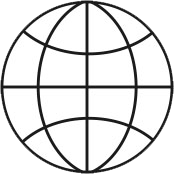
ap

ap
An International Peer Reviewed Research Journal
AJP
SSN : 0971 - 3093
Vol 12, No 1, January - March,
2003
Asian Journal of
Physics
Vol. 12, No
1 (2003) 1-12
Probing Molecular Dynamics by Femtosecond Time-Resolved Coherent Anti Stokes Raman Spectroscopy
M
Schmitt1, T Siebert1, A S
Grabtchikov2, V. Orlovich2, and W
Kiefer1
1Institut fur Physikalische Chemie,
Universität Wurzburg,
Am Hubland,
D-97074 Wurzburg, Federal Republic of Germany
2B. I. Stepanov Institute of Physics, National Academy
of Sciences of Belarus, Minsk, Belarus
___________________________________________________________________________________________________________________________________
Femtosecond time-resolved CARS spectroscopy is applied in order to prepare and monitor coherent states of different samples. The time evolution prepared by such methods gives information on the dynamics of molecular vibrations. In a first example the electronic ground state dynamics of biologically relevant porphyrin molecules are studied with transient CARS spectroscopy. Second, we report on selective excitation of the vibrational modes in the electronic ground state of polymers of diacetylene by means of a femtosecond time-resolved CARS scheme. Control is achieved by varying the timing and the phase shape (chirp) of the exciting laser pulses. Finally the capability of the CARS process to interrogate individual normal modes was utilised for exploring the influence of nuclear dynamics on the process of the S1/S0 internal conversion (IC) in 13-carotene, by placing the CARS process in a pump-probe scheme, where it plays the role of a mode selective probe.
Total Refs: 65
___________________________________________________________________________________________________________________________________
Asian Journal of Physics Vol. 12, No 1 (2003) 143-152
Collocation
method for numerical scalar wave propagation through
optical waveguiding structure
Anurag
Sharma,
Physics Department, Indian Institute of Technology
Delhi
NEW DELHI - 110 016, India
Email:
asharma@physics.iitd.ac.in
___________________________________________________________________________________________________________________________________
Collocation method has been developed as a method which can treat the paraxial as well as non-paraxial wave propagation through optical waveguiding structures. The method, based on the orthogonal collocation principle, converts the Helmholtz equation into a matrix ordinary differential equation. This equation termed as the collocation equation can be solved either by using direct numerical techniques or by special techniques based on the matrix operator algebra. In the present paper, we outline the basic principle of the method and discuss its applications to the propagation of paraxial, wide-angle, bidirectional and nonlinear waves. Examples have also been included to show performance of the method.
Total
Refs : 36
___________________________________________________________________________________________________________________________________
© ANITA PUBLICATIONS
All rights reserved
Designed & Maintained by
Manoj
Kumar